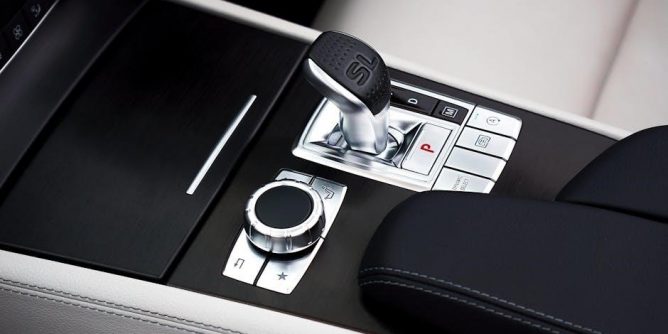
Automatic and manual turntables offer distinct listening experiences. Automatic models provide ease of use, while manual turntables require a more hands-on approach, appealing to different audiophile preferences.
1.1 Definition and Basic Explanation
An automatic turntable plays records with minimal user input, automatically lifting and placing the needle. A manual turntable requires users to physically lower the tonearm, offering precise control. Both designs aim to deliver high-quality audio but cater to different preferences in convenience and hands-on engagement.
1.2 Historical Context and Evolution
Manual turntables originated in the late 19th century with phonographs, requiring users to manually place the needle. Automatic turntables emerged in the mid-20th century, simplifying record playback. Both have evolved, with manual models emphasizing precision and automatic ones focusing on convenience, reflecting shifting listener preferences over time.

Key Differences in Operation
Automatic turntables operate with minimal user input, cueing and stopping records automatically. Manual turntables require hands-on control, such as lifting and placing the tonearm, offering more tactile engagement.
2.1 Automatic Turntable: How It Works
An automatic turntable operates with minimal effort, featuring a motorized mechanism. It starts spinning the record with the press of a button, automatically lifting and placing the tonearm at the beginning. Once the record ends, the tonearm returns to its rest position, stopping the platter. This seamless process requires no manual intervention, ensuring convenience and ease of use for listeners.
2.2 Manual Turntable: How It Works
A manual turntable requires hands-on operation. Users must place the record, start the motor, and manually lift and position the tonearm. After the record plays, the tonearm must be lifted and the platter stopped. This process demands attention and care, offering a tactile experience that appeals to audiophiles who value precision and control.
2.3 Main Operational Differences
Automatic turntables operate with minimal user input, starting the motor and lowering the tonearm automatically. Manual turntables require users to start the motor, lift and position the tonearm, and stop playback manually. This hands-on process demands more skill and attention, making manual models less convenient but more appealing to purists seeking control.
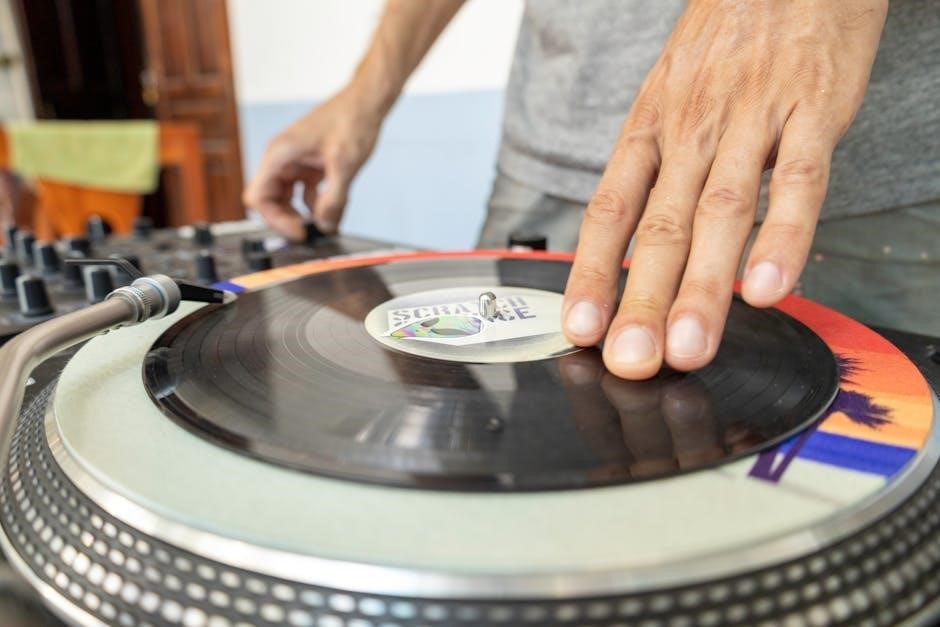
Sound Quality Comparison
Manual turntables often deliver superior sound quality due to reduced mechanical interference, while high-end automatic models can match or even surpass their manual counterparts in clarity and depth.
3.1 Sound Quality of Automatic Turntables
Automatic turntables deliver consistent sound quality with minimal user intervention. They often feature built-in phono preamps, making them versatile for various setups. While they may lack the absolute clarity of high-end manual models, advancements in technology have narrowed the gap, offering rich, detailed audio reproduction suitable for casual and discerning listeners alike.
3.2 Sound Quality of Manual Turntables
Manual turntables are renowned for their superior sound quality, offering a pure analog listening experience. They provide better dynamic range and tonal accuracy, making music sound more authentic and detailed. High-end models with direct-drive or belt-drive mechanisms ensure consistent speed and reduced vibration, enhancing clarity. For audiophiles, manual turntables often deliver the ultimate vinyl listening experience.
3.3 Factors Influencing Sound Quality
Sound quality in turntables is influenced by components like the cartridge, motor stability, and plinth construction. Manual turntables often benefit from higher-grade materials and precise setups, while automatic models may introduce slight mechanical noise. Proper calibration, record condition, and phono preamp quality also play crucial roles in achieving optimal audio performance for both types.
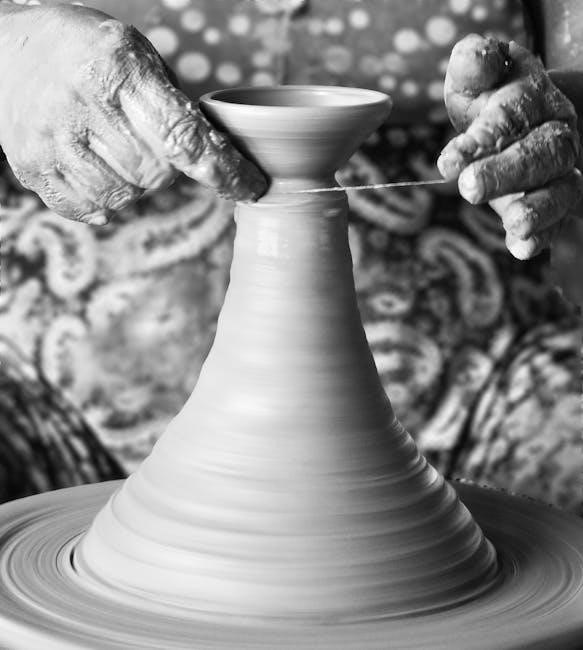
Ease of Use and User Experience
Automatic turntables offer a user-friendly experience with features like automatic start/stop, while manual turntables require more hands-on operation, appealing to those who enjoy a more tactile, immersive process.
4.1 Automatic Turntable: User-Friendly Features
Automatic turntables feature a convenient design with automatic tonearm lifting, preset buttons, and Bluetooth connectivity, making them ideal for casual listeners who prioritize ease of use and seamless music playback without manual adjustments.
4.2 Manual Turntable: Learning Curve and Expertise Required
Manual turntables require a learning curve, as users must master cueing the needle, adjusting tracking force, and understanding anti-skate settings. This demands patience and expertise, making them less accessible for beginners but rewarding for audiophiles who value precision and control over their listening experience.
4.3 Which Is Better for Beginners?
Automatic turntables are generally better for beginners due to their ease of use and minimal setup; They operate with the touch of a button, reducing the learning curve and risk of damaging records or the stylus. This makes them more forgiving and user-friendly for those new to vinyl listening.
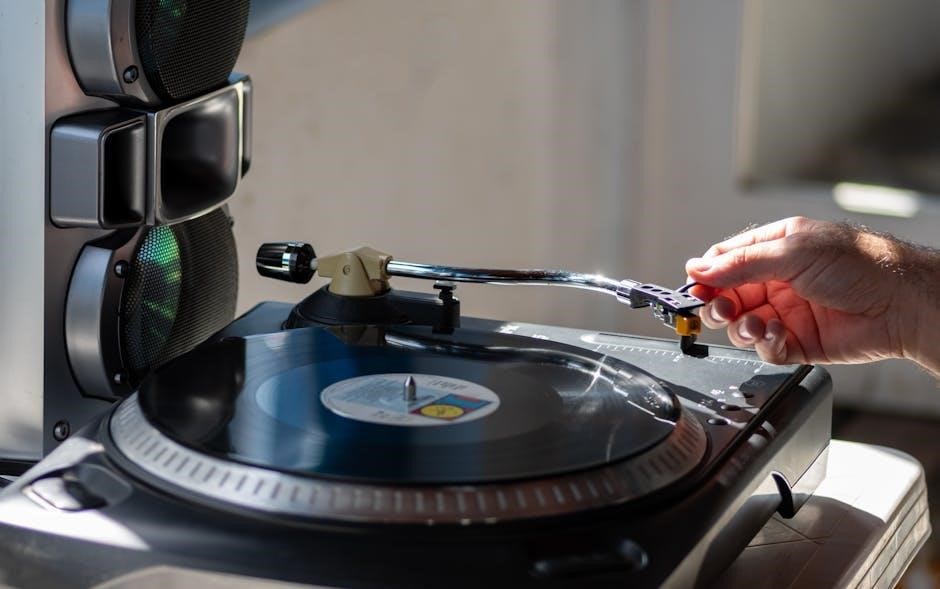
Maintenance and Upkeep Requirements
Automatic turntables require less maintenance than manual ones, as they have fewer moving parts. Regular cleaning and occasional belt replacements are typically sufficient. Manual turntables need more attention, including stylus replacements and motor adjustments, to ensure optimal performance and longevity of both the device and records.
5.1 Maintenance Needs for Automatic Turntables
Maintenance for automatic turntables is relatively low. Regular cleaning of the platter and tonearm is essential. Belt replacements are occasional, and motor alignment rarely needs adjustment. The stylus and cartridge should be inspected periodically for wear. Proper care ensures smooth operation and consistent sound quality over time.
5;2 Maintenance Needs for Manual Turntables
Manual turntables require more meticulous care. Regular cleaning of the platter, tonearm, and cartridge is essential. The belt drive needs periodic inspection for wear, and the motor should be lubricated as needed. Proper alignment and balancing of the tonearm are crucial for optimal performance and sound quality.
5.3 Tips for Extending Lifespan
Regularly clean the turntable, including the platter and tonearm, to prevent dust buildup. Store records in sleeves and avoid exposure to extreme temperatures or humidity. Properly balance and align the tonearm to reduce wear on the cartridge. Replace the stylus as recommended, and use a high-quality record brush for maintenance.

Price and Value for Money
Automatic turntables are generally more affordable, starting at $100, while manual turntables range from $200 to over $1,000. Durability and sound quality often justify the higher cost.
6.1 Price Range of Automatic Turntables
Automatic turntables typically range from $100 to $500 for entry-level models, offering essential features. Mid-range options, with improved sound quality, cost $300 to $800. High-end automatic turntables, featuring advanced technology and premium materials, can exceed $1,000. Prices vary based on brand, build quality, and additional features like Bluetooth connectivity or USB recording capabilities.
6.2 Price Range of Manual Turntables
Manual turntables vary in price, with entry-level models starting at $100–$300, suitable for beginners. Mid-range options, offering better build quality, cost $300–$800. High-end manual turntables, designed for audiophiles, can range from $800 to $2,000 or more, depending on features, materials, and brand reputation, offering superior sound quality and durability.
6.3 Cost-Effectiveness: Which Offers Better Value?
Manual turntables often provide better long-term value due to their durability and lower maintenance needs. While automatic turntables are more affordable upfront, manual models typically last longer and retain their quality, making them a cost-effective choice for serious vinyl enthusiasts willing to invest initially for lasting performance and sound quality.
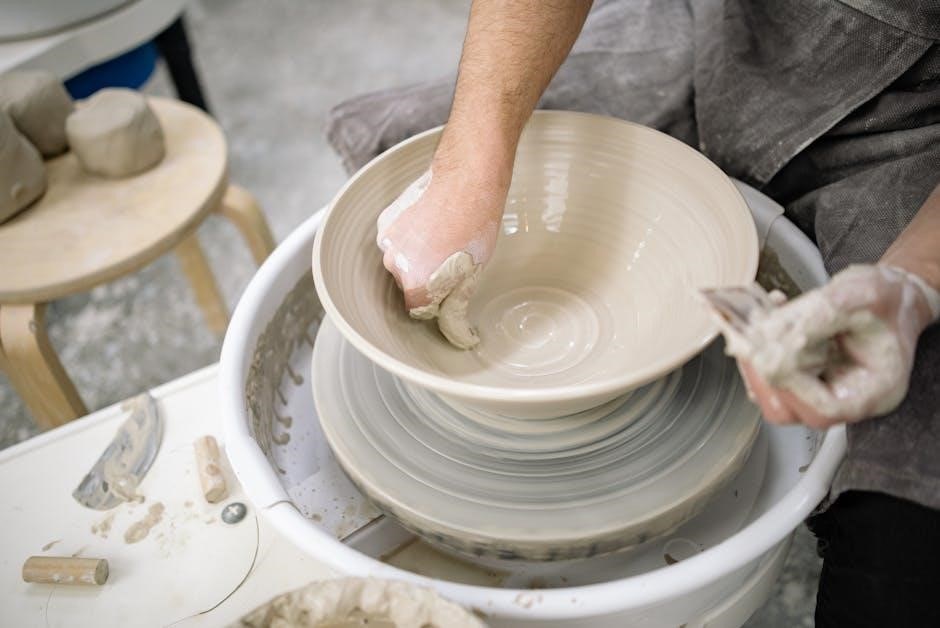
Usage Scenarios and Preferences
Automatic turntables suit casual listeners and party settings with their convenience, while manual turntables are favored by audiophiles for precise control and enhanced sound quality, reflecting user preferences.

7.1 Automatic Turntables: Best Use Cases
Automatic turntables are ideal for casual listeners, parties, and everyday use, offering hassle-free playback with minimal setup. They’re perfect for those who value convenience and simplicity, making them great for social gatherings or quick listening sessions without the need for manual adjustments or expertise.
7.2 Manual Turntables: Best Use Cases
Manual turntables are ideal for audiophiles and dedicated listeners seeking precise control over playback. They shine in immersive listening sessions, offering a tactile experience. Best suited for vinyl enthusiasts with space and time to appreciate the ritual of record handling, manual turntables deliver a purist audio experience for those who value precision and tradition.
7.3 Personal Preference and Listening Habits
Personal preference and listening habits greatly influence the choice between automatic and manual turntables. Casual listeners may prefer automatic turntables for convenience, while audiophiles often favor manual models for their tactile experience and precise control. Lifestyle and dedication to vinyl playback also shape this decision, reflecting individual priorities and enjoyment styles.
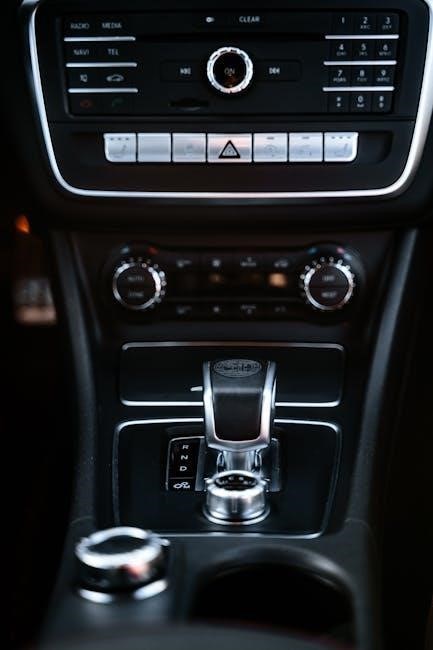
Durability and Longevity
Automatic turntables may have shorter lifespans due to moving parts, while manual models often last longer with proper maintenance, offering durability for dedicated vinyl enthusiasts.
8.1 Durability of Automatic Turntables
Automatic turntables vary in durability, depending on build quality and usage. While convenient, they may not last as long as manual models due to moving parts. Proper care can extend lifespan.
8.2 Durability of Manual Turntables
Manual turntables are known for their durability due to fewer moving parts. They often feature high-quality materials and simple mechanisms, reducing wear and tear. With proper care, such as regular cleaning and maintenance, and careful handling of records, these turntables can last for decades, making them a long-lasting choice for audiophiles.
8.3 Factors Affecting Longevity
Longevity of turntables depends on maintenance, materials, and usage. Proper cleaning, regular lubrication, and avoiding dust buildup extend lifespan. High-quality components and robust construction enhance durability. Environmental factors, like humidity and temperature, also play a role. Handling records carefully and storing them properly further contribute to the overall longevity of both automatic and manual models.
Automatic and manual turntables cater to different needs, balancing convenience and control. The choice depends on personal preference, sound quality priorities, and listening habits, ensuring a tailored vinyl experience.
9.1 Summary of Key Points
Automatic and manual turntables have evolved from historical roots, offering distinct sound quality and user experiences. Automatics prioritize convenience, while manuals emphasize precision and customization. Maintenance needs and price points vary, with manuals often requiring more upkeep and investment. Durability and personal preference ultimately guide the choice for vinyl enthusiasts.
9.2 Recommendations Based on User Needs
For casual listeners seeking convenience, automatic turntables are ideal due to their ease of use and minimal maintenance. Audiophiles preferring precise control and superior sound quality should opt for manual models. Consider personal preferences, budget, and willingness to maintain equipment when choosing between automatic and manual turntables for the best vinyl experience.
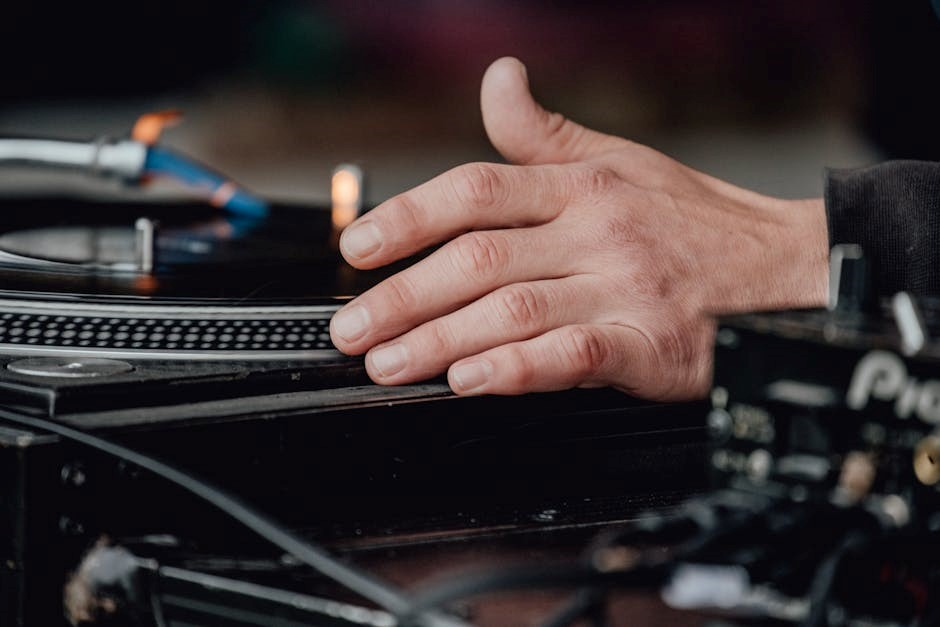
Future Trends and Innovations
Future turntables may integrate advanced automation, app connectivity, and eco-friendly materials. Manual models could adopt innovative cartridge tech, while automatics might feature AI-optimized playback, enhancing both convenience and sound quality.
10.1 Emerging Technologies in Turntables
Emerging technologies in turntables include AI-optimized playback, wireless connectivity, and app-controlled features for automatic models. Manual turntables may adopt advanced materials and cartridge designs. These innovations aim to enhance sound quality, convenience, and user experience, blending traditional vinyl enjoyment with modern smart technology for diverse audiophile preferences.
10.2 How Automatic and Manual Turntables May Evolve
Automatic turntables may integrate AI for optimal playback and wireless connectivity, while manual models could adopt advanced materials and hybrid digital-analog features. Future designs may emphasize sustainability, with eco-friendly materials and energy-efficient technologies. Both types could evolve to cater to diverse audiophile needs, blending tradition with innovation for enhanced listening experiences and user satisfaction.